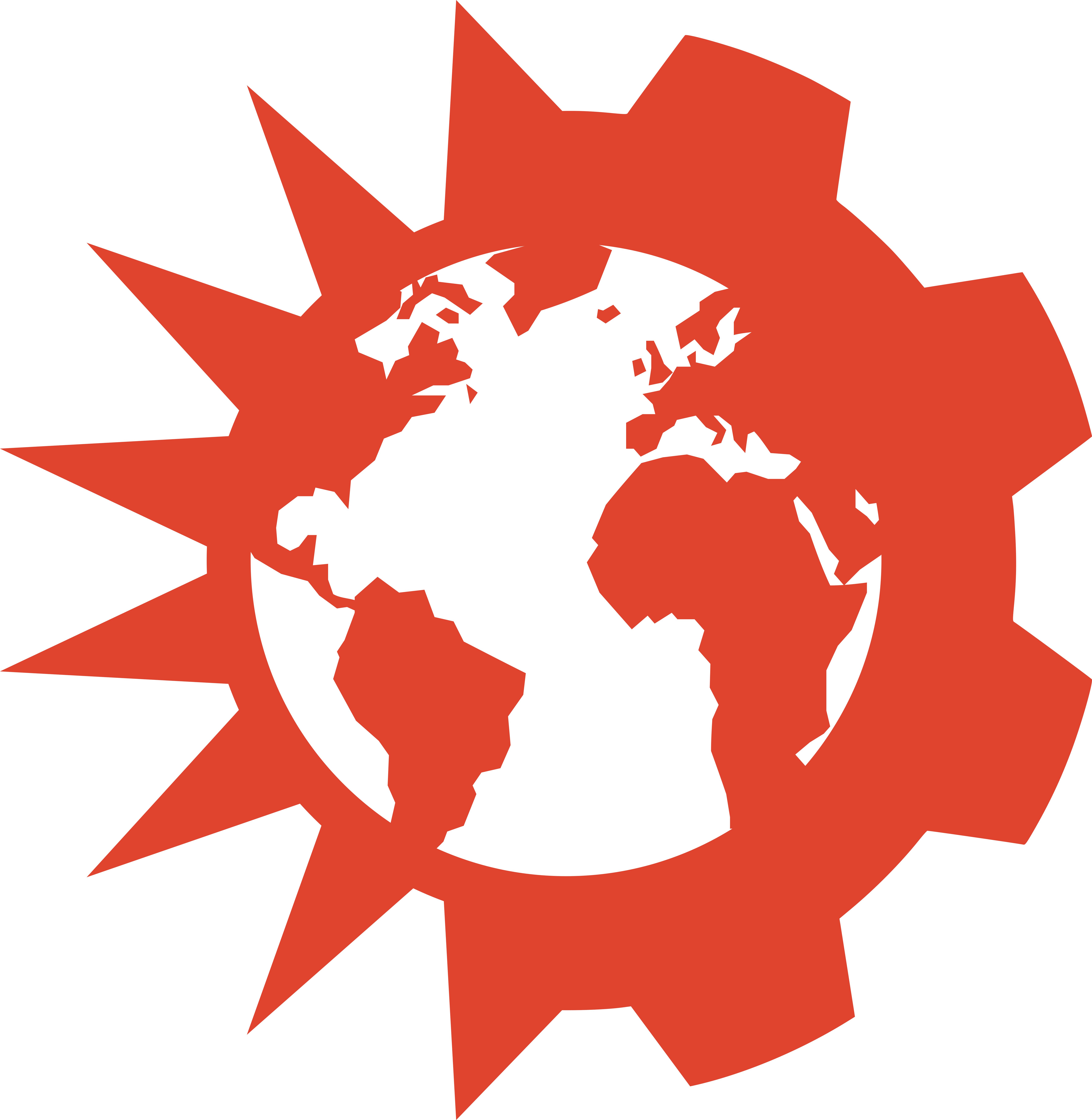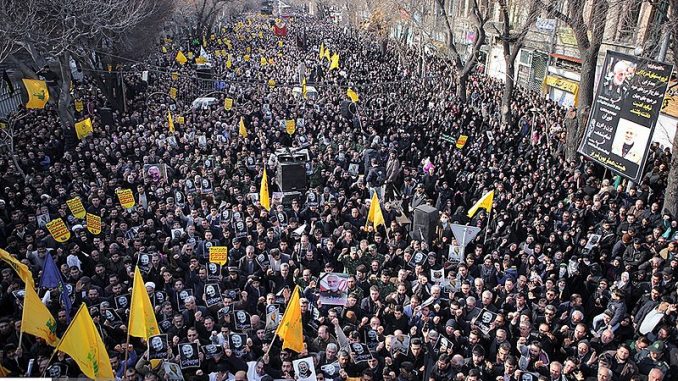This article was originally written for socialistworld.net, the website of the Committee for a Workers’ International.
Build a socialist movement that can offer an alternative to the rich elite, poverty and capitalism!
A wave of anger at what is seen as the regime’s lying and incompetence after the tragic downing of a Ukrainian aircraft, with mostly Iranian passengers, has sparked off the third round of mass protests in Iran in just over three years. Within a matter of days, the widespread “national unity” produced by Trump’s assassination of General Suleimani has been rapidly undermined. These events are a further example of the extremely volatile period we are living in and how quickly sudden changes can take place.
The realisation that the regime had lied to the population about the death of many Iranians triggered what have become daily protests in Tehran and other cities. Officials claimed that both President Rouhani and the religious leaders did not know that Iranian missiles brought down the Ukrainian aeroplane until the evening of January 10. But on January 11, when General Amir Ali Hajizadeh, Commander of the Revolutionary Guards’ Aerospace Force, publicly admitted its role in the “unintentional” strike, he also said that he had informed officials about it on January 8.
The protests that immediately developed had radical, anti-regime, slogans like “Death to the liars!”, “Down with the dictator!”, “They are lying that our enemy is America; our enemy is right here!”, “Guards – you are the dictator; you are our Isis!” and “We don’t want the Islamic Republic!”. On January 15, calls were circulating for nationwide demonstrations against a “thieving and corrupt government”.
Significance of protests
Even though, so far, the size of these protests has been small, they mark a significant political development. Last November saw large nationwide protests, sparked off by a rise in fuel prices, develop rapidly. Even the state-backed news media reported demonstrations, road blockades and attacks on buildings in around 100 cities and towns. These had a wider geographical spread than the previous wave of workers’ demonstrations and strikes, often on the question of wages, beginning in November 2017 and continuing into early 2018.
Recent years have seen clear signs in Iran of continued development of independent workers’ organisations and student opposition, including campus socialist groupings. Significantly, this is despite continuing repression and state violence. Last November’s protests were met with vicious repression. Hundreds were killed, the death toll is possibly well over a 1,000, and thousands were injured and arrested. The last few years have seen continual arrests, trials and imprisonment of trade unionists, worker activists and student socialists. The current protests have also been met by repression, with reports of shootings, beatings and arrests but, at the same time, the strength of popular anger has forced the authorities to state they will tolerate “legal protests”.
Repression has not permanently stopped new protests starting in Iran. For years now, the regime has been openly divided and these divisions are deepening in the face of increasing popular opposition, economic crisis and Trump’s threats. It is quite possible that the shooting down of the Ukrainian jet will heighten these divisions and be used in the ongoing factional struggle within the ruling elite.
The regime is divided on how to handle the protests. The semi-official media has reported the arrest of the person who filmed the video showing the shooting down of the plane. But, at almost the same time, the Iranian foreign minister said that “people (were) in the streets of Tehran demonstrating against the fact that they were lied to for a couple of days”.
Both these tensions in the ruling class and the growing oppositional mood could now even be reflected through the heavily controlled parliamentary elections due to be held on February 21.
Western leaders’ hypocrisy
Right now, the competing imperialist powers are seeking both to limit the repercussions of Suleimani’s assassination and to take advantage of the shooting down of the plane. But this is not being done to help the mass of the Iranian people. A recent statement issued by some students at the Amir Kabir University warned that Iranians are “surrounded by evil from every direction” and called for a “policy that will not rush into the arms of imperialism due to … fear of despotism”.
Clearly, this is a call to reject the demagogy of Trump and the US administration. Despite Trump’s claims to Iranians that he has “stood with you”, he, like all capitalist rulers, is no principled defender of democratic rights. Trump is quite happy dancing and trading with the autocratic Saudi rulers. At the very same time as claiming to support the protesters in Iran, Trump published a fawning tribute to the recently deceased Omani ruler, Sultan Qaboos, saying he had “brought peace and prosperity to his country and was a friend to all”. Yet Oman is a country that even the CIA officially describes as an “absolute monarchy”, like Saudi Arabia, i.e. with no elections and few democratic rights. Is this the model Trump wants for Iran?
Now Donald Trump and his supporters are trying to unload onto the Iranian regime all the responsibly for the tragic air crash. But it is Trump’s policies – Suleimani’s assassination, the threat to destroy 52 Iranian targets against the background of his “maximum pressure” sanctions – which have heated up the situation.
Even on the question of Iran’s slowness in admitting responsibility for bringing down the Ukrainian plane, the Tehran regime’s two-day delay cannot be compared with the four years that the US government took to admit that it had shot down an Iranian passenger plane in 1988. But the fact that civilian aircraft were allowed to fly at all in what was effectively a war zone shows the rulers’ arrogant contempt for working people.
The next steps
Last year saw mass movements and revolutionary developments in Algeria, Iraq, Lebanon and Sudan as well as in Iran. These showed the potential force of the working class and poor people to change society. The challenge now is to build upon these struggles and continue the steps already being taken to build trade unions and create democratic organisations of working people, youth and the poor.
Such organisations can both give leadership to the struggle against the regime and also be the basis for a government that breaks the power of the ruling class and breaks with both imperialism and capitalism, thereby creating the basis for a genuinely socialist transformation of society.
Significantly in Iran, a group of workers at the Haft Tappeh Agro-Industry Company in oil-rich Khuzestan province issued a statement announcing their intention to join the latest protests. This workforce has been building a genuine trade union and has played a key role in previous protests, especially in November 2018, with demands for the renationalisation of their privatised workplace and its management by a “workers’ council … based on collective decision-making”.
The recent statement by Amir Kabir University students was clearly moving in this direction, denouncing the economic policies that have created “a whole host of neglected groups, alongside a group of privileged, rich and corrupt individuals”. While not clearly calling for a socialist break with capitalism, they wrote about “the need for social and political democracy”.
Such is the situation in North Africa and the Middle East that a revolution along these lines in Iran would have a rapid impact internationally. A movement in Iran, based around the working class and with a socialist programme, could be a major catalyst in building the forces for socialist change – the only way to liberate the vast majority in society from the constant cycle of capitalist wars and mass repression.

